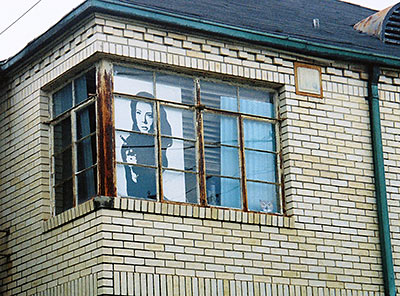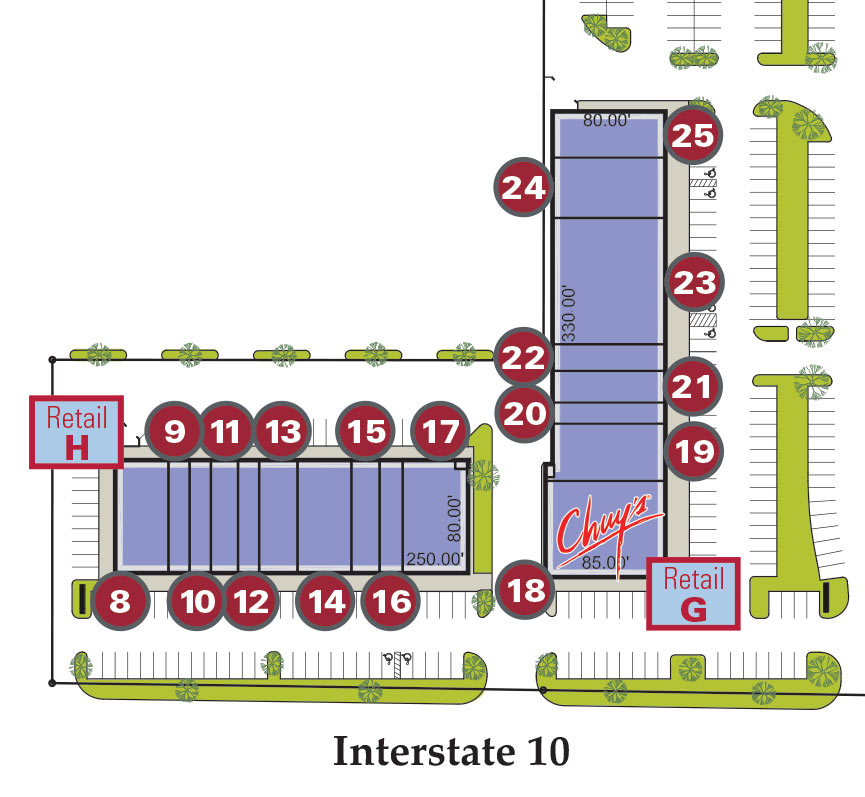
The River Oaks Examiner‘s Michael Reed reports that “more than 10 families” are serious about leaving Wilshire Village . . . and they’ll be hosting a couple of eviction sales over the next 2 weekends to prove it:
“We are going to be OUT, but you don’t have to be … shop indoors at those apartments participating,†fliers being distributed for the event read.
Could that mean? . . . Yes, apparently:
A resident, told the Examiner that tenants had recently been given until the end of March to leave, and that the owner had agreed to help with the moving expenses.
“We haven’t seen anything in writing,†he said, but added that he is “reasonably pleased.â€
- Wilshire residents plan eviction sale [River Oaks Examiner]
- Wilshire Village coverage [Swamplot]
Photo of Wilshire Village window: Katharine Shilcutt Gleave





“the owner had agreed to help with the moving expenses.”
If this is true, then great.
Octomom is living in Wilshire Village!
This seems like a decent resolution. Of course I would like to see these apartments rehabilitated, but if that isn’t going to happen, it is good that the tenants aren’t being thrown to the curb, as seemed likely just a few days ago.
Good on him. He is doing the right thing by his tenants.
When we had to give our tenants thirty days notice to vacate when we sold our rental houses we didn”t charge them rent for their last forty five days
At last! At least a flicker of integrity!
This is indeed good news – a month could make a world of difference for some people.
I’ll certainly mourn the loss of Wilshire Village for nostalgic reasons, but I also read something on the wonderful Houston Architecture Info Forum that made me think regarding dollars and cents (sense, perhaps?) and some of the abandoned apartments, which I’ll take the liberty of quoting a bit of:
“Through the collapsed ceilings the attic is visible and is indeed a Texas basement – enough roof area to stand up in. Imagine if the place had been kept up – what would the going price be for a 2 bedroom apartment/condo with living room, dining room, 2 entrances and a loft 3rd room; perhaps a half bath as well? ”
Were I a developer familiar with the prices places like Hermann Lofts have fetched, I would need a bib to keep from embarassing myself if Wilshire Village was still available. Considering the market projections for the next several years and the glut of condos, “ya gotta have a gimmick”, as Gypsy Rose Lee’s mother said. Seems like restored living space in buildings with character and proven structural integrity would certainly be a better selling point over yet another anonymous condo building, plus it takes the neighborhood into account as well. Somehow, “luxury mid-rise” and “Fiesta Mart across the street” don’t really jell in my mindset whereas “restored Art Deco apartments” appeals to a well-off demographic seeking an interesting place to live who wouldn’t mind being within walking distance of places not quite up to certain standards, shall we say? *coughFreakyFoodscough*….
Hellsing,
Your theory can also work in reverse. Who would re-develop an aging apartment complex when the surroundings include other old apartment complexes and an old Fiesta in an aging strip center?
The Fiesta and the Wilshire Apartments both are both large properties that can affect a neighborhood. To most developers or real estate investors, even though Fiesta is old, it’s still a popular place to shop a very much a neighborhood market like most smaller Fiesta stores are. The Fiesta can be dealt with a new apartment complex across the street and actually seen as an advantage. It would be hard to justify redoing the strip center with what appears to be a run-down vacant apartment complex across the street. Whether the impression of Wilshire is true or not doesn’t matter, appearances are more important in this game.
Yes, and unless plans have changed, Wilshire Village is making way for a luxury midrise, not a new apartment complex. I’m talking about redoing Wilshire Village to acceptable marketing standards and taking advantage of the restore-not-waste philosophy that all indicators say will prevail for the foreseeable future. I’ve never argued that the property belongs to whoever purchased it – if Dilick wants to gamble that the economy will return to the freewheeling “build it new and spend it now” lifestyle, who am I to naysay? The very nature of a developer is to gamble – just because the Sonoma and Turnberry Tower threw the wrong timing dice doesn’t mean that every project will. I’m merely saying what I would do from a standpoint of someone dealing with upscale multi-inhabitant real estate on a daily basis. It’s entirely possible that he had never even looked at the property buildings from a restoration standpoint; however, the world has changed a bit since plans were announced in 2005. Perhaps a little number-running is happening even now.
Regardless of whatever happens, I certainly hope that any project involving more concrete addresses the flooding issues in the Dunlavy/West Alabama area or Dilick’s going to have a lot of unhappy neighbors and possibly a lawsuit or two on his hands.
I agree. The market may not be ready for more “luxury” mid-rise.
Another thing I would like to throw out there for everybody to consider. This place is likely to be torn down, but it does hold lots of pieces which can be considered quite valuable. If Dilick realizes this, he could make a killing of the sale of these materials.
There is a market for old windows frames, old plumbing fixtures, doors, door frames, closets, etc. This place has a lot of this stuff in it. It not my taste of things, but I know there are lot who treasure this and can find great uses for them.
Imagine you had an old home and wanted to have period appropriate fixtures, door knobs, etc. The place would be a gold mine.
If the building can’t be saved, the pieces that gave it character can be saved. Even the bricks can serve a purpose. My parents’ house built in the late 70s used old Chicago Fire bricks. They were remnants of old buildings. The bricks were cheap and add lots of character.
Imagine having one of those bay windows!
It may not be what the restoration crowd wanted, but it could be some silver lining.
Absolutely – look at the photos and the condition of the brick itself. Amazing.
I still go back to Carter’s Grove Apartments as an example of restoration vs. teardown. They were the shame of Garden Oaks and a proven hazard to residents with over 240 municipal court violations resulting in a $100K fine for the owner. Take a drive around North Shepherd at 34th and see what restoration hath wrought with minimal disruption to the area and improvements on utility infrastructure as well as property values. If those ratholes can have a future life as pricey condos, anything is possible.
Hopefully, Dilick will donate the architectural elements to Historic Houston. That, too would be the right thing to do.
yes! carters grove housed many of my friends and their families back when they were still around. while the 1 week notice they were given to vacate their residneces was a little harsh many of them saw it as a kick to the ass in disguise. the place was horrible. holes in the walls from rats, melted wiring, no a/c in houston summertime, wobbly staircases reminicent of indiana jones movies. all of them were happy to leave and i know alot of them were helped out by volunteer groups who aided in moving expenses and housing vouchers. i’m even happier to see they did not morph into another row of lego land townhomes like the ones who sit next door. when will they re-open?
what’s up with that?
i can see an argument for restoration. there are companies who will collect and supply the analysis for would be developers.
the bottom line should be return on the dollar but with a bow in the direction of restoration as the first option. take a look at the old buildings in europe for example.